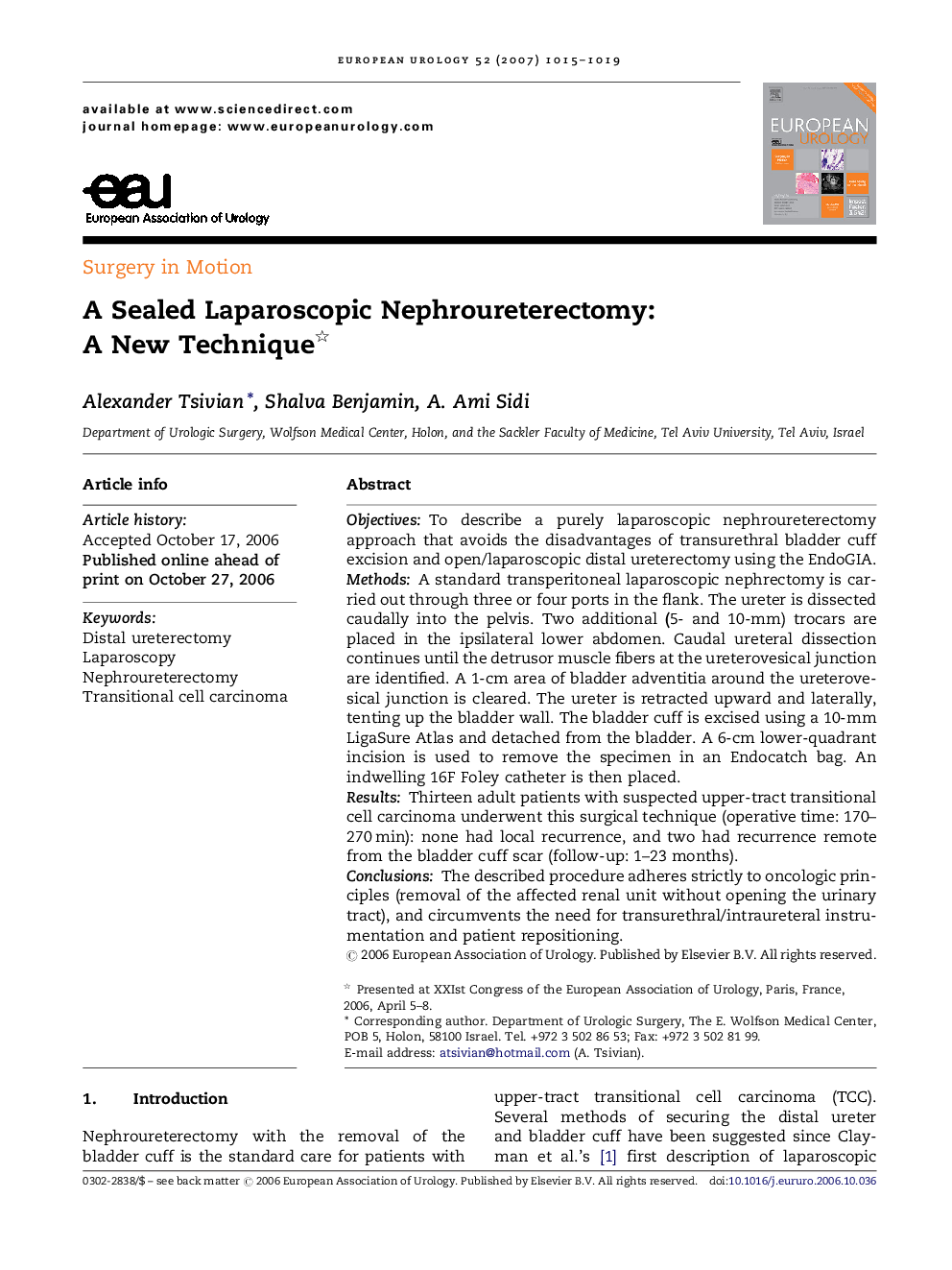| Article ID | Journal | Published Year | Pages | File Type |
|---|---|---|---|---|
| 3923334 | European Urology | 2007 | 5 Pages |
ObjectivesTo describe a purely laparoscopic nephroureterectomy approach that avoids the disadvantages of transurethral bladder cuff excision and open/laparoscopic distal ureterectomy using the EndoGIA.MethodsA standard transperitoneal laparoscopic nephrectomy is carried out through three or four ports in the flank. The ureter is dissected caudally into the pelvis. Two additional (5- and 10-mm) trocars are placed in the ipsilateral lower abdomen. Caudal ureteral dissection continues until the detrusor muscle fibers at the ureterovesical junction are identified. A 1-cm area of bladder adventitia around the ureterovesical junction is cleared. The ureter is retracted upward and laterally, tenting up the bladder wall. The bladder cuff is excised using a 10-mm LigaSure Atlas and detached from the bladder. A 6-cm lower-quadrant incision is used to remove the specimen in an Endocatch bag. An indwelling 16F Foley catheter is then placed.ResultsThirteen adult patients with suspected upper-tract transitional cell carcinoma underwent this surgical technique (operative time: 170–270 min): none had local recurrence, and two had recurrence remote from the bladder cuff scar (follow-up: 1–23 months).ConclusionsThe described procedure adheres strictly to oncologic principles (removal of the affected renal unit without opening the urinary tract), and circumvents the need for transurethral/intraureteral instrumentation and patient repositioning.
